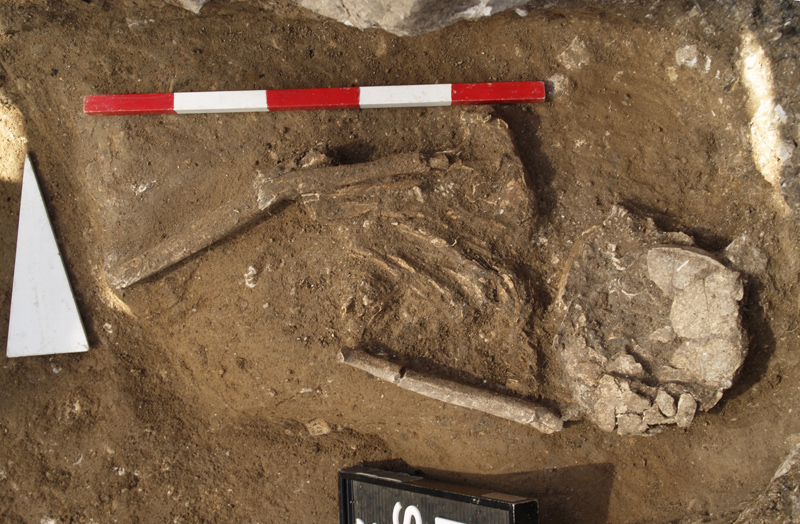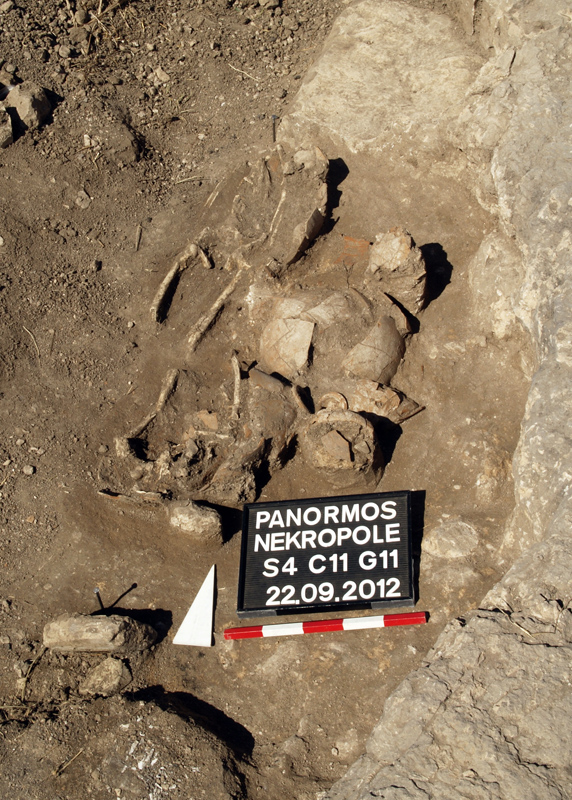Human Remains
During the excavations all in-situ bone material/skeletons were first drawn at a scale of 1:10. Soil samples were taken from the large vessels (especially where there was burnt material) in order to allow analysis which might indicate the presence of human bone. All such organic materials and soil samples were collected and stored. The bone material now need to be anthropologically examined to obtain reliable information on age, gender and health status of the deceased.
We hope such studies will help clarify some of the curious state of many of the graves which included many incomplete skeletons. In some cases it was difficult to judge whether the bones represented the disjointed funeral of a single body or selected parts of several corpses buried together in a single grave. Re-use of an older burial does not seem to offer a good explanation in the cases observed so far, based on the stratigraphy.
Continue to -> Restoration…
 Project Panormos
Project Panormos








